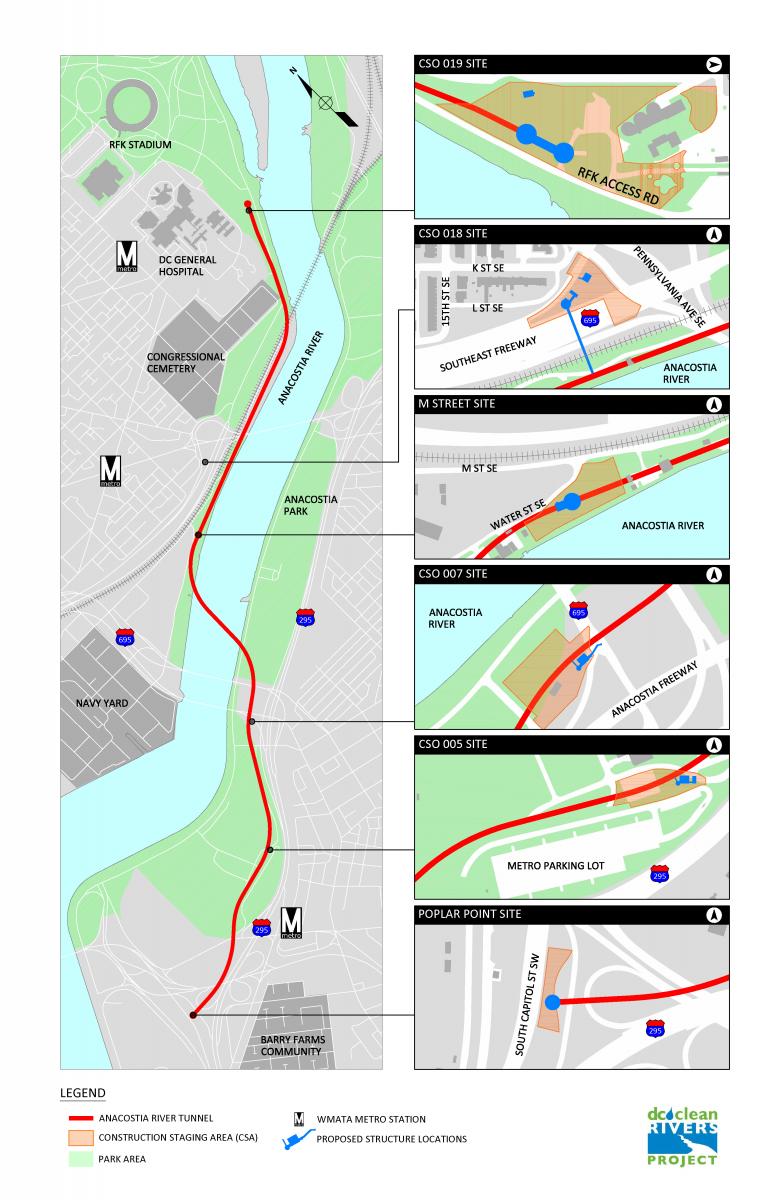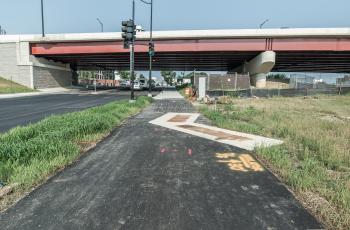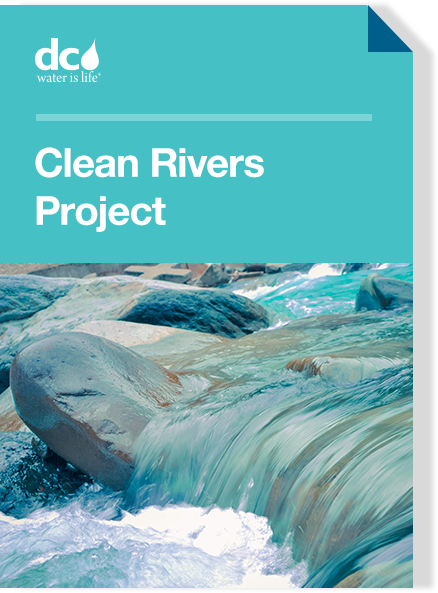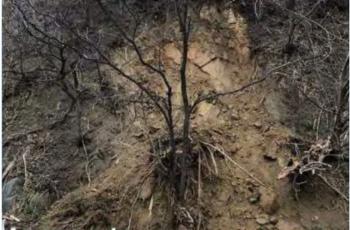Anacostia River Tunnel Project
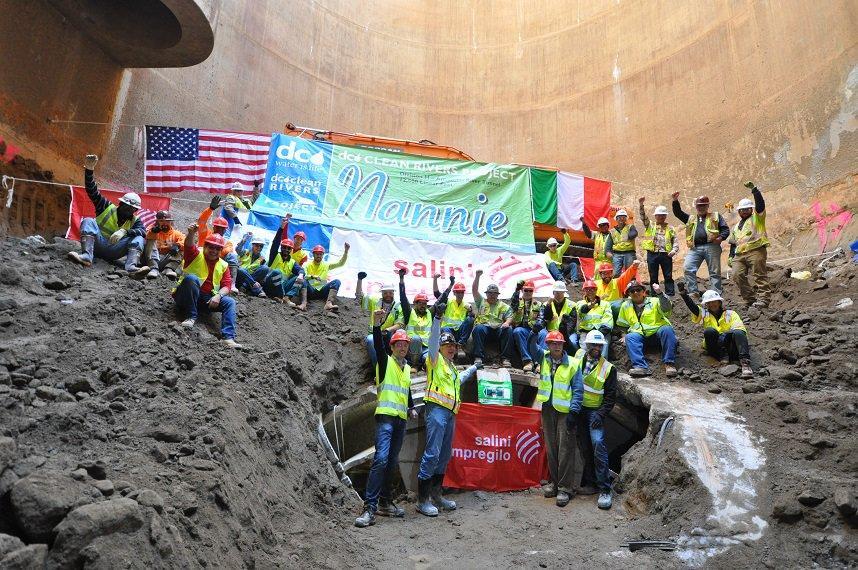
The first phase of the Clean Rivers Project to control combined sewer overflows to the Anacostia River is complete. Nannie, the tunnel boring machine named after the famous District educator, Nannie Helen Burroughs, finished the construction of the 2.4 mile long Anacostia River Tunnel in November 2016. The Anacostia River Tunnel is now connected to the Blue Plains Tunnel (mined by former powerhouse Lady Bird) at Poplar Point, adjacent to the Frederick Douglass Bridge. Check out this great video below that gives an overview of the Anacostia River Tunnel in 60 seconds!
Overview
The Anacostia River Tunnel Project is the second in a series of four tunnels that mitigates combined sewer overflows that are currently discharged to the Anacostia River. The 23-foot diameter tunnel is approximately 12,500 feet in length and extends from Robert F. Kennedy (RFK) Stadium in northeast DC to Poplar Point in southeast DC. In addition to the tunnel, DC Water has also built surface facilities to divert the combined sewer overflows to the tunnel at various sites along the I-295 corridor, M Street SE and the Southeast Freeway. These facilities include deep shafts that range from 20 to 60 feet wide and large concrete structures to divert raw sewage from being discharged to the Anacostia River. The construction of these facilities was unparalleled in the District. Not since the construction of the original sewer system in the early 1900s and the Metro has the District seen construction of this magnitude.
The Anacostia River Tunnel connects with the Blue Plains Tunnel at Poplar Point and delivers captured combined sewer overflows to the Blue Plains Advanced Wastewater Treatment plant for treatment prior to discharge to the Potomac River. With the Blue Plains and Anacostia River Tunnels in service, DC Water has met a key Consent Decree milestone in the Clean Rivers Project. Since it's completion in March 2018, combined sewer overflows to the Anacostia River have been reduced by 90 percent.
Scope of Work
- Installation of 12,500 foot long, 23-foot diameter reinforced concrete tunnel
- Tunnel approximately 80 to 120 feet deep
- Construction of diversion facilities at existing combined sewer overflows to reduce discharges of untreated sewage to the Anacostia River
- Ventilation control facilities to regulate air flow in the tunnel system
"Nannie" Tunnel Boring Machine
| "Nannie" | Quick Facts | Performance |
|---|---|---|
 |
|
|
Project Location Map
